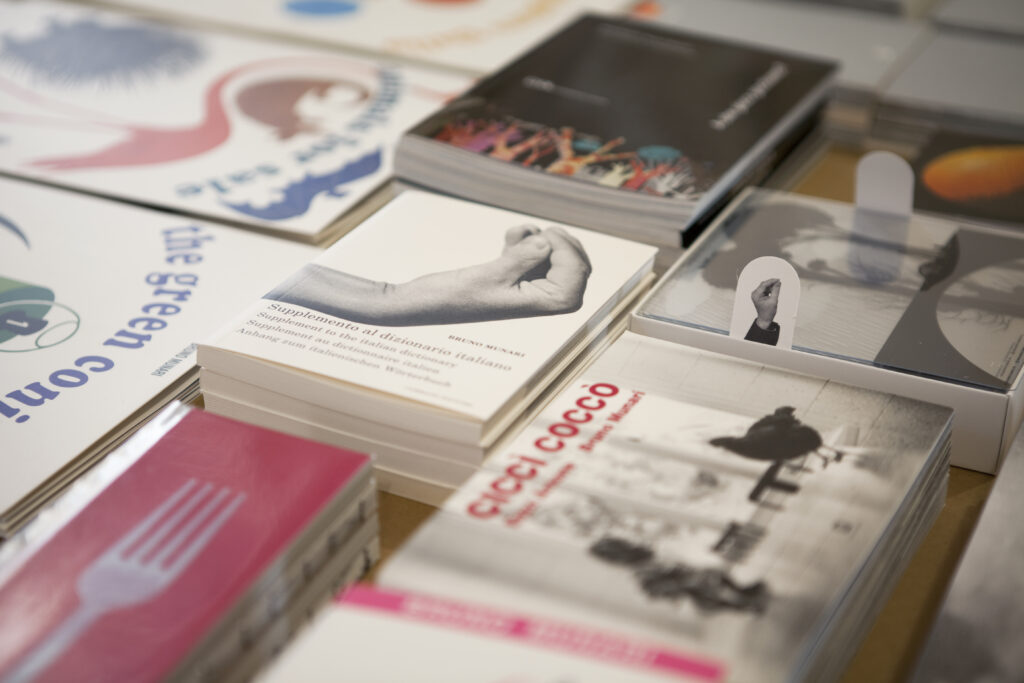The series of interviews with the most interesting independent publishers on the Italian scene continues. Protagonist, with the voice of Pietro Corrainiis Corraini Edizioni, born as an art gallery that has been designing and producing books with artists of great importance for fifty years.
Tell us about Corraini. How it came about, what editorial line it has, who it is aimed at.
Corraini was founded 50 years ago by Marzia and Maurizio, who decided to open an art gallery in Mantua. Therefore, the company was founded not as a publishing house, but as Galleria Corraini. Over the years it developed through relationships with artists, especially Bruno Munari, who worked with Corraini for over 20 years. The exhibition catalogs gradually became independent books. Meeting Munari prompted the gallery to invest and work on the book as an art object; However, these are not limited edition art books, but rather books that were conceived and designed by an artist.
How?
With an unpredictable and uninterrupted process that also extends to the publishing house and that has lasted for 50 years and has repeatedly reshuffled the cards between the different disciplines. For this reason, Corraini titles are still created today together with the authors; they are the ones who, together with us, contribute to the creation of the entire project of the book object. This is an aspect that characterizes all of our books, which at first glance are all different, but what they have in common is that they were created in collaboration with artists/authors. Corraini is aimed at all lovers of art, design and illustration books, but more generally at those who are not afraid of not defining themselves and love non-standard objects.
How do independent publishers survive in a context like Italy’s, where many people don’t read books?
Independents are looking for their audience and their audience is looking for them; All over the world there are “subgroups” of people who are interested in different things but know how to recognize quality. These are readers who stand outside the usual marketing definitions but appreciate the content.
What book or author most represents or connects with you and why?
There are many authors who represent the spirit of Corraini; Historically, the impetus was given by Munari, who, with his relationship with Marzia and Maurizio, also changed Corraini’s way of thinking about books, leaving an imprint that we still see today in many of the designers, graphic designers and young authors who collaborate with us. I’m thinking, for example, of illegible books made from different materials; Munari taught us to be 360-degree writers and that the book is not just a container but a storytelling machine. This is then reflected in the work of many of the new authors we work with Suzy Lee to Fausto Gilberti or Steven Guarnacciawho, together with us, learned, digested and revised Munari’s lesson.

Would you like to tell us about an independent publisher whose work you particularly like?
The Timaeus Publishing House.
Are there any previews of the books coming out in the next few months?
For us, books are spaces and there is no difference between the way we design a space and the way we design a book; Therefore, I can now say that on September 29th the Spazio Munari opened at Via Savona 17/5 in Milan, a place very close to our hearts and dedicated to Munari, with a consultation room, exhibitions and meetings. Then in November a book by Steven Guarnaccia will be published, dedicated to his career as an illustrator and designer, and we will also have an exhibition in New York. Then for Christmas a book by Fausto Gilberti from the series dedicated to the great artists of the 20th century.
Last question: You definitely need to read this book at least once in your life.
To name one by Corraini and one not, let’s say Blindness by Saramago (Feltrinelli) and Fotocronache by Bruno Munari (Corraini). Both teach the importance of knowing what you look like and how to recognize it.
Dario Moalli